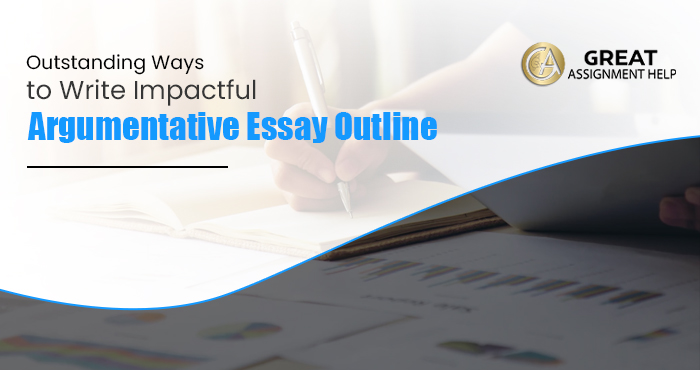Cost vs. Price vs. Value Issues
Decision to be implemented
Drought was the main reason that resulted in less production of potatoes. The manufacturers of potato chips faced difficulties to generate profitability from the items that are produced with the use of potato. There has been a substantial increase in the price of potatoes by about 25%. For holding on the profit margins, the company needs to tactically handle the situation so that all the stakeholders are benefitted from the decision. The company should focus on reducing the weight of the packaged food to compensate with the price hike of potatoes. Increasing the price of per unit package will not be beneficiary as because this may adversely affect the loyal customers of the brand. Sudden hike in price shall result in moving of customers towards a different brand. Hence, reducing the packaging weight by 1.1 ounces without prior knowledge of the customers would help in holding the profit margins. Even the customers won’t be concerned much about the fact of weight reduction (Budrionytė & Gaižauskas, 2018). After discussing with the marketing director of the company and also taking in consideration of decisions taken by the company in the past for similar scenarios, the weight reduction was found to be the most ideal strategy for implementation. This strategy is accurate and has been used by several other manufacturers in the past to compete against the hike of item production cost.
Stakeholder analysis

After analyzing the decisions from the perspective of each and every stakeholder, it is found that the decision of decreasing the packaging weight per unit is the most ideal strategy for dealing with the potato price hikes. In this way, the company will be able to maintain its margin of profit and even the customers will also remain happy.
Ethical analysis
Utilitarianism
Concept of utilitarianism is to make a decision based on the happiness of the majority involved with a certain case or scenario (Jonsson & Voorneveld, 2018). Concerning this concept, the decision of decreasing the weight of per packaging unit has been found more ethical for using in this case. Without prior information of the customers, the company can reduce the weight of per unit by 1.1 ounce so that the net profit amount of the company remains stable. With the increase of potato prices in the market, the manufacturers have to buy the potato at an increased price of 35% from the suppliers. For managing the profit margins the potato chips firm either has to switch towards price increase of per packaging unit or decrease the net weight of per packaging units (Choo, 2017). Utilitarianism in this prospect gives priority to the decision of reduction in packaging weight without the prior information of customers. The value of the packs per unit should remain the same as $2.19 presently. This will benefit each and every stakeholder of the company regardless of the fact of increase in potato prices. When the prices again shrink the manufacturer can automatically sustain back to their original packaging weight.
Profit maximization
Process that companies undergo for determining the best pricing policies and output levels to achieve the particular goals is known as profit maximization. Based on profit maximization the potato chips manufacturer would have to rely on the decision of increasing their prices on per unit basis. As the prices of the raw potato has increased by 35% due to drought, the suppliers are finding it difficult to meet the supply demand and are forced to supply the potatoes at the maximum rate. Demand of salty snacks is very high in this region and hence the manufacturers should also increase the per unit price of their products to compensate their production costs (Marques, 2019). This will help in maximizing their profit by huge terms. Although the strategy of reducing pr unit weight can help in holding up the margins but increase in price will maximize the profit to a greater extent. Substantial increase of about $0.33 almost 15% of the previous value will help the manufacturer earn a maximum profit upon the current scenario. Customers shall opt for the same products as they are also aware of the hike in the price of potatoes. Thus the company also has a valid and ethical reason to increase their per unit prices of potato chips.
Universalism
Ethical universalism means implications of action that universally applies in case of anyone regardless of the current circumstances. For the case of price hike of potatoes, the chips manufacturer company has to take a decision that will help in holding their profit margins. Following universalism theory the best decision for the company will be to reduce the net packaging weight of per unit by 1.1 ounces without any prior information of the customers. In the past history of the company it has been found that similar kind of strategy was implemented by the authorities to handle the sudden price hike of the raw materials. Even other manufactures like bar-candy and other edible items, most frequently make use of this weight reduction strategy (Melton & Miller, 2018). It has proved to be beneficial for all in even in the past. Customers in majority will not be affected for such a marginalized weight reduction. The main concern for them will be focused on the price tag. Hence keeping the pre unit price fixed the manufacturer has to substantially make the reduction in the packaging weight. Even the size of packaging should not be altered as because it new appearance will affect the customers thinking. Hence to move on with standard margins of profit and satisfying all the stakeholders the following strategy will be the best one.
Selection of ideal strategy or decision
Considering all the facts and theories of decision analysis the best decision is to reduce the overall packaging weight of potato chips per package. The suppliers of potato have forcefully increased the prices by 35% for which the manufacturing unit of chips is also experiencing increase in production cost. To maintain the profit margin, reducing the package weight per unit shall prove to be effective (Goyal & Goyal, 2018). First of all a decrease in 1.1 ounces will not be a factor of worry for the customers. Secondly the profit margins can be adjusted and maintained if the strategy is implemented properly. The last thing for this perspective will is to maintain the same packaging size of the items is very much essential on the customer's perspective. Hopefully this all implications can be effective in handling the whole scenario.
Certain perspectives might challenge the decision of reducing the packaging weight. It is not essential that the all the customers would be happy and stick to the same product after such an action (Strauch, 2016). Even the manufacturing unit may face difficulties in packaging procedures, such as retaining the same packet size and shape. Other manufacturers may opt to reduce their profit margins by keeping everything same such as the product price, quantity and quality. In this way customers may get attracted toward that particular brand of item. Thus to implement this weight reduction strategy for the potato chips these are the some drawbacks that can support the fact for not implementing this particular strategy.
References
Budrionytė, R., & Gaižauskas, L. (2018). Historical cost vs fair value in forest accounting: the case of Lithuania. Entrepreneurship And Sustainability Issues, 6(1), 60-76. doi: 10.9770/jesi.2018.6.1(5)
Choo, D. (2017). Mill’s Multilevel Utilitarianism - Beyond the Dichotomy of Act vs Rule Utilitarianism -. Korean Journal Of Philosophy, 131, 47-71. doi: 10.18694/kjp.2017.05.131.47
Goyal, B., & Goyal, P. (2018). Manufacturing of Potato Chips and its Quality Improvement. Journal Of Food Processing & Technology, 9(12). doi: 10.4172/2157-7110.1000765
Jonsson, A., & Voorneveld, M. (2018). The limit of discounted utilitarianism. Theoretical Economics, 13(1), 19-37. doi: 10.3982/te1836
Marques, J. (2019). Retrieved 1 November 2019, from https://scholar.valpo.edu/cgi/viewcontent.cgi?article=1124&context=jvbl
Melton, J., & Miller, R. (2018). Decisions, decisions: Cybervetting through the eyes of students. Journal Of Education For Business, 93(5), 252-259. doi: 10.1080/08832323.2018.1442785
Strauch, B. (2016). Decision Errors and Accidents. Journal Of Cognitive Engineering And Decision Making, 10(3), 281-290. doi: 10.1177/1555343416654629








